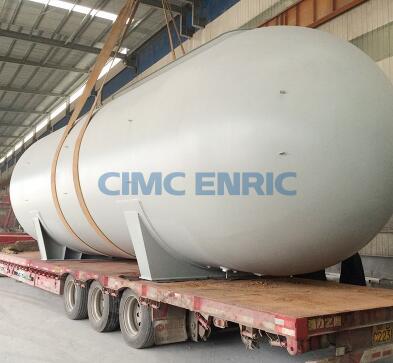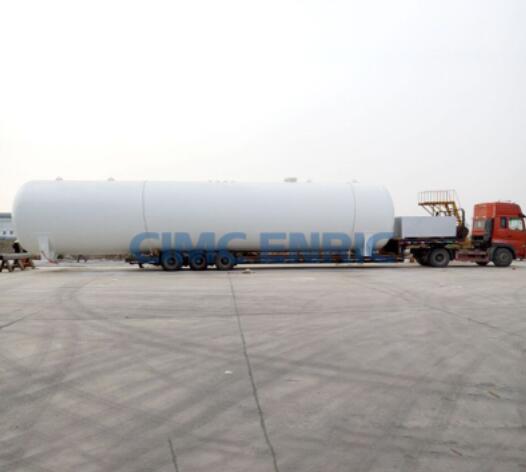LPG tanks play a vital role in the safe and efficient storage of LPG. So what are LPG tanks for?
What is LPG or Liquefied Petroleum Gas?
Liquefied Petroleum Gas (also known as LPG or LP gas) is a flammable substance made from a mixture of hydrocarbon gases, mainly propane and butane, with smaller proportions of other substances such as ethylene or ethane.
LPG was first produced by Walter O. Snelling and has been in use for over a century. As the number of applications for LPG has increased, so has the demand for this substance.

It is currently considered a cleaner and more environmentally friendly alternative to other fossil fuel energy sources, a view that will see its global market size grow at a CAGR of 4.4% from 2020 to 2027, according to Grand View Research.
This substance is obtained from fossil fuels through the refining process or by extracting it from a natural gas source.
How LPG is stored
LPG is liquefied to maximise its storage opportunities, as 1 litre of LPG has been shown to be as efficient as 270 litres of natural gas.
However, in order for it to liquefy, it must withstand specific cooling and pressure conditions, which must also be maintained during storage (and possibly transportation). The use of LPG tanks and other alternatives such as LPG cylinders, LPG bulk tanks, underground LPG tanks or small LPG tanks can solve this problem.
Flat-bottomed cryogenic tanks are one of the most efficient ways of storing LPG, with capacities ranging from 1,000 to 30,000 cubic metres.
When considering LPG tanks, a number of risks must be considered.
There is a risk of explosion
LPG leaks can also lead to the risk of asphyxiation
it is an extremely flammable substance
In its liquefied state, contact with LPG can cause severe burns
You may like: Why are flat bottom tanks ideal for storing cryogenic gases?
Uses of LPG tanks
LPG can be used for a variety of applications, including
Heating (particularly popular in off-grid homes)
Cooking appliances
Alternative fuels for cars and other vehicles
Refrigerants
Industrial uses
Therefore, just like the storage and transportation of LNG, LPG tanks are the most efficient way to deliver LPG and provide easy access to it.
Industrial LPG tanks
LPG is used as an energy carrier in many industries. It is also used as a feedstock for the chemical synthesis of substances such as butylene, propylene, ethylene and acrylic acid. Again, the purpose of LPG tanks is to facilitate access to such substances for different industries.

Using LPG tanks
When using LPG tanks, the following safety measures are recommended.
It is recommended that LPG bulk tanks be installed on the ground in a well-ventilated or outdoor area. Mechanical ventilation systems should be considered to ensure that fresh air is provided.
LPG tanks must be protected from any source of ignition or heat and be fire rated. Combustible materials should also be kept away from LPG tanks, as well as any items that may generate static electricity.
They should be kept away from incompatible substances and barrier systems (e.g. screen walls made of non-combustible materials) should be considered.
Alarm systems and air quality testing are recommended to monitor potential LPG leaks.
Staff must wear adequate personal protective equipment when operating LPG tanks to avoid freezing burns and other hazards.
A proper maintenance schedule must be ensured to avoid tank bursts and other safety issues.
Pressure reducing valves are a common accessory for LPG cylinders. These can help to relieve pressure in case the pressure rises and endangers the system.
The engineering team responsible for the design and implementation of LPG tanks must comply with the required national and international legislation and quality protocols.
LPG tanks must be stored vertically and with the valves closed. The use of appropriate restraint methods, including chains or safety belts, must also be considered.
These storage solutions must also maintain all the necessary documentation to record the safety measures taken, as well as all documentation relating to dangerous goods protocols.
All in all, LPG tanks represent an efficient and safe method of storing LPG. In the case of industrial LPG use, these storage solutions should be part of an engineering process that takes into account the specific needs of the substance.
If you are looking for safe and reliable LPG tanks, please feel free to contact us.
Copyright:@2020-2021
Comments Please sign in or sign up to post.
0
0 of 500 characters used